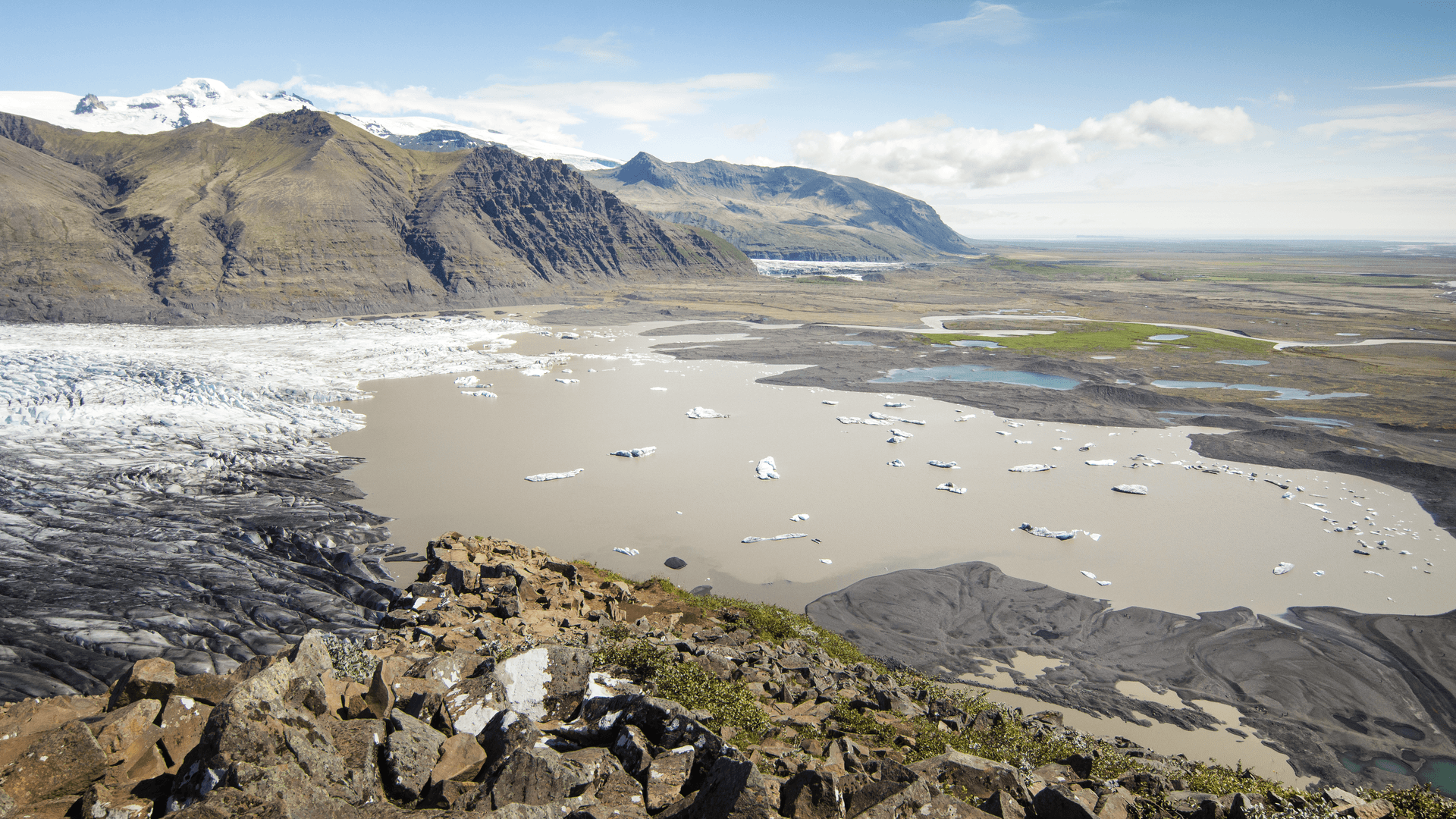You are here
Vatnajökull National Park has an incredible variety of landscape features created by the combined forces of rivers, glacial ice, and volcanic and geothermal activity. It spans 13,600 square kilometers (5,300 square miles), which is over 13% of Iceland, and it is the largest national park in Western Europe. Svartifoss is a waterfall surrounded by a unique geological amphitheater of basalt columns, and Skaftafellsjökull is a subsidiary tongue of the Vatnajökull glacier. An 8-kilometer (5-mile) path takes you up 390 meters (1,280 feet) to the falls and to a high overlook above the glacier and its lagoon. If you are only interested in seeing the waterfall, the route type is there-and-back and has an elevation gain of 120 meters (393 feet) with a round-trip distance of 2.4 kilometers (1.5 miles).
Begin your adventure at the Skaftafell visitor center. Here you'll find information about the attractions and hiking trails in the area as well as practical information about the activities and accommodation. There is a sign that says "Svartifoss" to the left of the main entrance near the restrooms. Follow this gravel path into the camping area and, uphill to your right, the well-marked trailhead. The path will do a quick switchback and continue in a northwest direction, ascending on a metal-grated path. You’ll climb for about 35 meters (114 feet) as the trail gets higher and higher above the campsite. There is a wooden bridge over a stream and several steps. At this point, the path dips to an observation deck overlooking the Hundafoss (a waterfall). Make a right at this next junction up the wide path and continue to the north at a gradual ascent as the grand profile of Kristínartindar (1,126 meters) stands before you. You’ll reach an open area with an information sign and overlook down to Svartifoss. Follow the path down to the falls to get a closer look. For safety reasons and environmental preservation, stay on the footpaths and viewing platform by the waterfall. Failure to comply with these rules can result in fines and expulsion from the park.
Svartifoss is Icelandic for "Black Falls." The water originates from the Svinafellsjokull glacier and drops 20 meters (80 feet) over a cliff into an amphitheater of tall black basalt columns. This rock formation is created when lava rapidly cools and contracts. It will typically split into six-sided columns and form at right-angles to the cooling surface where heat loss is greatest. Some columns here radiate in many directions, which indicates an irregular hot surface. Looking closely, you’ll notice that these rock faces are usually marked by narrow horizontal bands. This is due to slow fracturing events as the columns cascade downwards. Bit by bit, the basalt columns framing Svartifoss break away and fall throughout the year. This natural geological phenomenon served as an inspiration for state architect Guðjón Samúelsson’s design of Hallgrímskirkja, the largest church in Iceland (Reykjavík).
Return up the hill to the bare area overlooking the waterfall. To the east there is a wooden signpost inscribed with "Sjónarnípá." Take this dirt path that follows a gentle climb over duckboards and wet ground. Cross a footbridge above a waterfall in Eystragil, and climb to another sign-posted junction. Continue to the left on a gentle, stony slope marked by wooden pegs. Upon reaching Sjónarnípá, you’ll immediately be overwhelmed with an incredible view over Skaftafellsjökull that is guarded by Hrútsfjall and Hvannadalshnúkur rising high in the background. You can see visitors far below exploring the black sand shores of its proglacial lake. When you are ready to make your return, look for the wooden post that says "Skaftafellstofa 3,0 km." Head south on this well-worn path downhill along the eastern cliff face. There will be many sections of wooden steps and platforms to help you on this steep descent through low birch scrub in Hrútagil. Eventually you will complete the trail loop back to the campsite where you began. Turn left to return to the visitor center.
Skaftafellssýslur is a large district stretching from Sólheimasandur to Lónsheiði and is named after the Skaftafell farm. During the Commonwealth period, before 1264, Skaftafell was an assembly site where local chieftains would meet before and after summer parliament (Alþingi) at Þingvellir. In 1362, the large volcanic beneath Öræfajökull erupted and decimated the countryside with debris. In 1783, Laki, a volcanic fissure, erupted along with Grímsvötn, an adjoining volcano, rather continuously over an eight-month period. It gave rise to river floods that washed sand and mud over low-lying hayfields. The farmers of Skaftafell retreated up the slope, though the event was followed by famine throughout the region. There’s no telling when the next eruption will take place or how violent it will be.
Logistics + Planning
Current Weather: Powered by Dark Sky





























Comments
Sign In and share them.